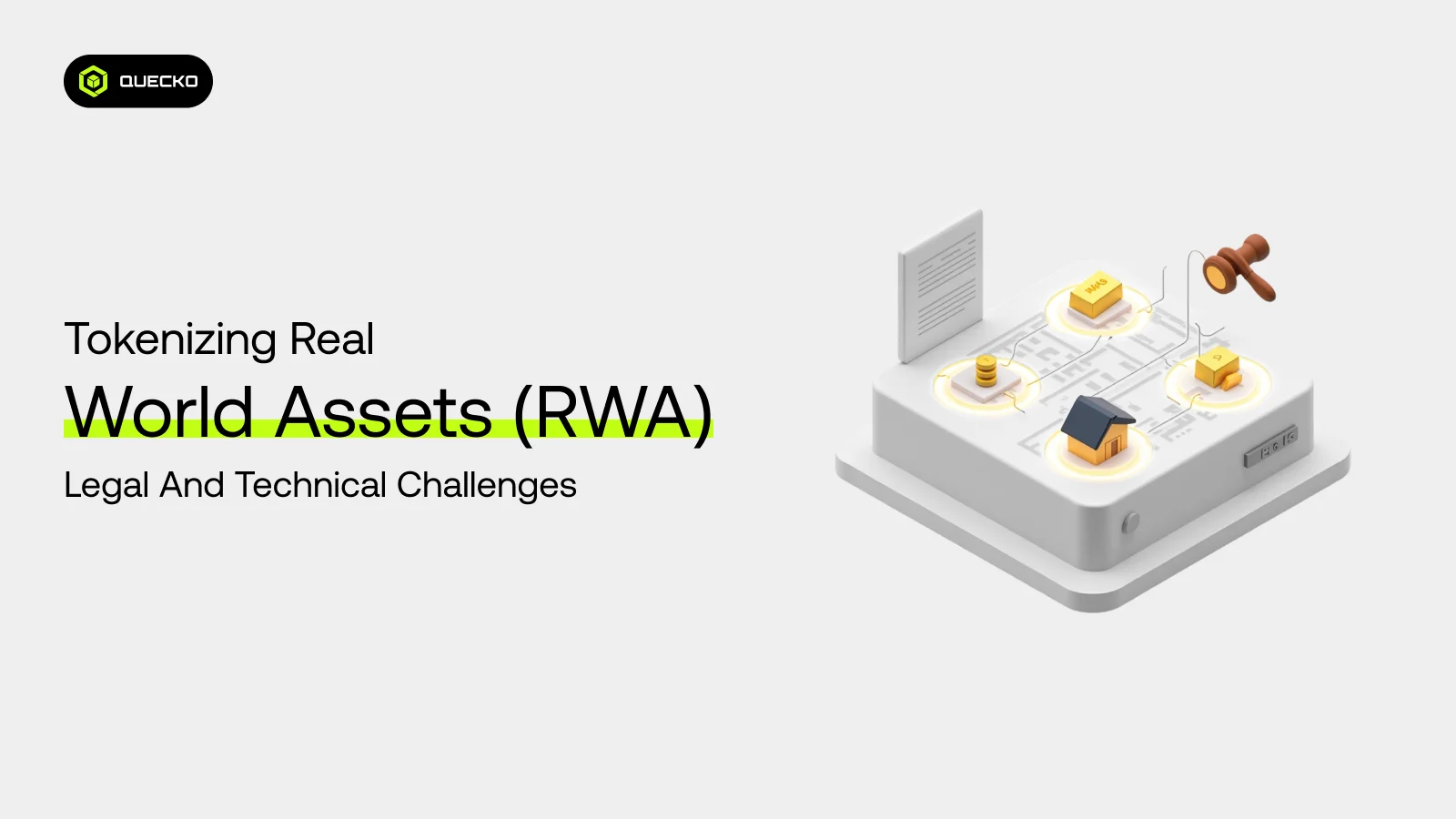Minting vs. Mining in Crypto: Understanding the Key Differences
Minting vs. Mining: Key differences in crypto creation. Learn how they work and which blockchains use each method.

Cryptocurrencies have become a global phenomenon, revolutionizing the way we think about digital assets, money, transactions, and decentralized networks. At the heart of this revolution are two fundamental processes: crypto minting and crypto mining. These processes are crucial for creating and validating new coins or tokens, ensuring the integrity and security of blockchain networks.
Crypto minting and crypto mining are often mentioned in discussions about cryptocurrencies, but they serve different purposes and operate in distinct ways. Understanding these differences is essential for anyone interested in the world of digital assets, whether you’re an investor, developer, or simply a crypto enthusiast.
But what exactly are minting and mining, and why do they matter? This guide will delve into the intricacies of both processes, exploring their roles, mechanisms, and the implications they have for the crypto ecosystem. We’ll break down the minting process—which is used to create new tokens, including non-fungible tokens (NFTs)—and how it differs from mining, which validates transactions and secures the network. By the end, you’ll have a clear understanding of how these two processes contribute to the creation and validation of cryptocurrencies, and why they are vital to the functioning of blockchain networks.
What Is Mining in Crypto?
Mining in the context of cryptocurrencies is the process of validating transactions and adding them to the blockchain ledger. This ensures the integrity and security of the cryptocurrency ecosystem by verifying and recording transactions in a decentralized manner.
How Cryptocurrency Mining Works
Mining involves several key steps and concepts:
- Solving Complex Mathematical Puzzles: Miners use powerful computers to solve complex mathematical puzzles. These puzzles are designed to be computationally intensive, requiring significant hashrate to solve. The difficulty of these puzzles adjusts automatically to ensure a consistent rate of block creation. It can be done via GPUs or with ASIC miners as well. Anyone can buy ASIC miner or get it from any ASIC miner hosting company like BitHash Crypto Mining to host your miner to avoid noise and electricity hassel.
- Proof of Work (PoW) as the Underlying Consensus Mechanism: The primary consensus mechanism used in mining is known as Proof of Work (PoW). In a PoW system, miners compete to solve the puzzles, and the first one to find the correct solution gets to add a new block to the blockchain ledger. This process involves hashing the block’s data and finding a hash that meets specific criteria (e.g., a certain number of leading zeros).
- Competition Among Miners: Miners compete against each other to solve the puzzle and add the next block to the cryptocurrency ecosystem. The miner who solves the puzzle first broadcasts their solution to the network. Other nodes in the network then verify the solution and, if valid, add the block to their copy of the blockchain. The successful miner is rewarded with newly minted crypto assets, including transaction fees from the transactions included in the block.
Beyond mining, another crucial process in the crypto space is crypto minting, which refers to the minting process of creating new tokens without relying on Proof of Work. This approach is commonly used in the issuance of non-fungible tokens (NFTs) and other digital assets. Minting often involves smart contracts—self-executing contracts with predefined rules—to automate token generation.
As cryptocurrencies gain traction, they increasingly interact with traditional financial systems, including fiat currency markets. Moreover, blockchain technology has extended beyond digital assets, influencing industries like real estate, where blockchain-based solutions are used for property transactions, ownership verification, and investment opportunities.
By integrating crypto mining, crypto minting, and blockchain innovations across sectors, the digital economy continues to evolve, reshaping how we perceive and engage with financial and tangible assets.
Popular Cryptocurrencies That Use Mining
Several well-known cryptocurrencies utilize mining to secure their networks and validate transactions:
- Bitcoin (BTC): Bitcoin is the most well-known cryptocurrency that uses mining. It was the first cryptocurrency to implement the Proof of Work consensus mechanism, and mining remains a core component of its network. Bitcoin miners compete to solve puzzles approximately every 10 minutes, adding new blocks to the blockchain and earning BTC as a reward.
- Ethereum 1.0 (ETH): Before transitioning to Ethereum 2.0 and the Proof of Stake (PoS) mechanism, Ethereum 1.0 used mining with the Proof of Work consensus mechanism. Ethereum miners validated transactions, executed smart contracts, and added blocks to the blockchain. The mining rewards included ETH and transaction fees.
- Litecoin (LTC): Litecoin, often referred to as the “silver to Bitcoin’s gold,” also uses mining with the Proof of Work mechanism. Litecoin’s mining process is similar to Bitcoin’s but with shorter block generation times (approximately 2.5 minutes) and a different hashing algorithm (Scrypt).
Mining plays a crucial role in maintaining the security and decentralization of blockchain networks. By requiring miners to invest computational power and energy, the PoW consensus mechanism makes it difficult for malicious actors to alter the blockchain, ensuring the integrity of the entire system. As the cryptocurrency landscape evolves, mining continues to be a foundational element for many blockchain networks.
Pros and Cons of Mining
Mining, especially in the context of cryptocurrencies like Bitcoin, has its set of advantages and disadvantages. Let’s delve into them in more detail:
Pros:
Following are some pros of mining:
- Proven Security Model
- Example: Bitcoin’s Success: Mining has been the backbone of Bitcoin’s security since its inception. The Proof of Work (PoW) consensus mechanism has proven effective in preventing double-spending and securing the network against attacks.
- Immutability: The computational effort required to mine blocks ensures that altering any transaction would require immense computational resources, making it practically infeasible to tamper with the blockchain.
- High Rewards for Early Adopters and Large-Scale Miners
- Early Adopters: Individuals and entities that started mining Bitcoin in its early days reaped significant rewards as the value of Bitcoin skyrocketed. Early miners accumulated large amounts of BTC at relatively low costs.
- Economies of Scale: Large-scale mining operations benefit from economies of scale, allowing them to deploy advanced hardware and reduce operational costs per unit of cryptocurrency mined, leading to substantial profits.
- Decentralized Validation Process (In Theory)
- Network Distribution: Ideally, mining is distributed across a vast network of independent nodes, preventing any single entity from controlling the blockchain. This decentralization is crucial for the integrity and trustworthiness of the network.
- Incentive Alignment: The reward structure incentivizes miners to act honestly and secure the network, as malicious behavior would result in financial losses due to the costs of mining equipment and electricity.
Cons:
Here are Cons of mining:
- High Energy Consumption and Environmental Impact
- Energy-Intensive: Mining, particularly for PoW cryptocurrencies like Bitcoin, requires significant computational power, resulting in high energy consumption. This has raised concerns about the environmental impact of mining operations.
- Carbon Footprint: The energy consumption of large mining farms often comes from non-renewable sources, contributing to carbon emissions and environmental degradation. Efforts are being made to transition to renewable energy sources, but challenges remain.
- Expensive Hardware and Operational Costs
- Specialized Hardware: Effective mining requires specialized hardware such as Application-Specific Integrated Circuits (ASICs) or powerful Graphics Processing Units (GPUs). These devices are costly and become obsolete quickly as newer, more efficient models are developed.
- Operational Expenses: In addition to the initial hardware investment, miners face ongoing costs, including electricity, cooling, maintenance, and facility management. These expenses can be prohibitively high for individual miners or smaller operations.
- Risk of Centralization Due to Mining Pools
- Mining Pools: To increase their chances of earning rewards, miners often join mining pools, where they combine their computational power and share the rewards. While this improves efficiency, it can lead to centralization if a few large pools control a significant portion of the network’s hash rate.
- Vulnerability to Attacks: Centralization of mining power in a few pools can make the network vulnerable to attacks, such as a 51% attack, where a single entity or coalition controls more than half of the network’s computational power, potentially allowing it to manipulate the blockchain.
Mining remains a critical component of many cryptocurrency networks, providing security and decentralization. However, its environmental impact, high costs, and potential for centralization present significant challenges that the industry must address to ensure sustainable and equitable growth.
What Is Minting in Crypto?
Minting in the context of cryptocurrencies is the process of creating new coins or tokens. Unlike mining, which relies on computational power and the Proof of Work (PoW) consensus mechanism, minting often uses Proof of Stake (PoS) or other consensus mechanisms. Minting is an essential process in maintaining the supply of a cryptocurrency and securing the network.
How Minting Works:Minting involves several key steps and concepts:
- Proof of Stake (PoS) as the Underlying Consensus Mechanism:Proof of Stake (PoS) is the primary consensus mechanism used in minting. In PoS systems, validators are selected based on the number of coins they “stake” or lock up as collateral. The more coins a validator stakes, the higher their chances of being chosen to validate transactions and mint new coins. This mechanism reduces the need for extensive computational power and energy consumption.
- Validators and Staking:Validators play a crucial role in PoS systems. To become a validator, an individual must lock up a certain amount of cryptocurrency as collateral. This process is known as staking. Validators are then chosen to validate transactions and add new blocks to the blockchain based on the number of coins they have staked and, in some cases, other factors such as the length of time they have been staking.
- Minting New Coins as Rewards:Validators who are selected to validate transactions and add new blocks to the blockchain are rewarded with newly minted coins. This reward incentivizes validators to participate in securing the network and ensures the continuous creation of new coins. The rewards also include transaction fees paid by users for including their transactions in the blockchain.
This process ensures that the network remains secure, decentralized, and efficient, with validators playing an essential role in maintaining its integrity.
Popular Cryptocurrencies That Use Minting
Several well-known cryptocurrencies utilize minting to secure their networks and validate transactions:
- Ethereum 2.0 (ETH2): Ethereum 2.0, also known as ETH2 or Serenity, transitioned from Proof of Work (PoW) to Proof of Stake (PoS) to improve scalability, security, and energy efficiency. In Ethereum 2.0, validators stake ETH to participate in the network’s consensus process and earn rewards in the form of newly minted ETH.
- Cardano (ADA): Cardano uses a unique PoS consensus mechanism called Ouroboros. Validators, known as “stake pool operators,” stake ADA to secure the network and validate transactions. In return, they receive rewards in the form of newly minted ADA.
- Solana (SOL): Solana employs a PoS consensus mechanism combined with Proof of History (PoH) to achieve high throughput and low transaction costs. Validators stake SOL to participate in the network and earn rewards for validating transactions and adding new blocks to the blockchain.
Minting plays a crucial role in maintaining the security and decentralization of PoS-based blockchain networks. By requiring validators to stake their coins, the PoS consensus mechanism aligns the incentives of validators with the network’s health and stability, ensuring that validators act in the network’s best interests. As the cryptocurrency landscape continues to evolve, minting remains a fundamental element for many blockchain networks.
Pros and Cons of Minting
Minting, especially in the context of cryptocurrencies using Proof of Stake (PoS) or similar mechanisms, offers several advantages and disadvantages. Let’s delve into them in more detail:
Pros:
- Energy-Efficient and Environmentally Friendly
- Lower Energy Consumption: Unlike mining, which requires substantial computational power and energy, minting relies on validators staking their coins. This results in significantly lower energy consumption, making PoS-based systems more environmentally friendly.
- Reduced Carbon Footprint: The energy efficiency of minting contributes to a reduced carbon footprint, addressing one of the major criticisms of traditional mining. This aligns with growing environmental concerns and the push for sustainable technologies.
- Lower Barriers to Entry
- No Need for Expensive Hardware: Minting does not require specialized hardware such as ASICs or powerful GPUs. Validators can participate using standard computers and software wallets, lowering the barriers to entry for individuals and smaller entities.
- Accessibility: The lower cost of entry makes it easier for more people to participate in the network, promoting inclusivity and democratizing the validation process.
- Encourages Long-Term Holding Through Staking
- Incentivizing Holding: Validators are required to lock up or stake their coins as collateral, which encourages long-term holding of the cryptocurrency. This can lead to reduced volatility and more stable prices.
- Alignment of Interests: By staking their coins, validators have a vested interest in the network’s success and stability. This alignment of interests promotes honest behavior and enhances the overall security of the blockchain.
Cons:
- Requires Holding a Significant Amount of Coins to Participate Effectively
- High Entry Threshold: To become a validator and effectively participate in minting, individuals often need to hold a significant amount of the cryptocurrency. This can be a barrier for those with limited financial resources.
- Concentration of Wealth: The requirement to stake a substantial number of coins can lead to the concentration of wealth among a few large stakeholders, potentially reducing the diversity of participants.
- Potential for Centralization Among Large Stakeholders
- Wealthy Validators: In a PoS system, validators with more coins have a higher chance of being selected to validate transactions and earn rewards. This can result in centralization of power among wealthy participants, undermining the principle of decentralization.
- Influence on Governance: Large stakeholders may have disproportionate influence on network governance and decision-making, affecting the network’s direction and policies.
- Less Proven Security Model Compared to PoW
- Historical Precedence: Proof of Work (PoW) has a longer track record and has proven its security over time, particularly in the case of Bitcoin. Proof of Stake (PoS) and other minting mechanisms are relatively newer and have less historical precedence.
- Security Concerns: While PoS is designed to be secure, there are concerns about potential vulnerabilities, such as the “nothing at stake” problem, where validators might validate conflicting blocks without penalty. Ongoing research and development aim to address these concerns and enhance PoS security.
Minting offers several benefits, including energy efficiency, lower barriers to entry, and incentives for long-term holding. However, it also presents challenges related to the concentration of wealth, potential centralization, and a less proven security model compared to mining. As the technology continues to evolve, addressing these cons will be essential for the widespread adoption and success of minting-based systems.
Key Differences Between Minting and Mining
| Aspect | Mining | Minting |
| Consensus Mechanism | Uses Proof of Work (PoW) | Uses Proof of Stake (PoS) or other mechanisms like Proof of Authority (PoA) |
| Energy Consumption | Energy-intensive due to computational power requirements | More energy-efficient as it doesn’t require solving complex puzzles |
| Hardware Requirements | Requires specialized hardware (e.g., ASICs, GPUs) | Requires staking coins, often done through software wallets |
| Reward Distribution | Rewards based on computational power and luck | Rewards based on the amount of coins staked and the validator’s participation |
| Decentralization | This can lead to centralization due to the high costs of hardware and energy | Promotes decentralization by allowing more participants to stake coins |
Both processes play crucial roles in the world of cryptocurrencies, ensuring the creation and validation of new coins while maintaining the security and integrity of blockchain networks.
The Future of Mining and Minting
The cryptocurrency industry is witnessing a significant shift from traditional mining (Proof of Work, PoW) to more sustainable and efficient minting mechanisms (Proof of Stake, PoS). This transition is driven by the need for energy efficiency, scalability, and environmental sustainability.
Shift from Mining to Minting:The shift from mining to minting is gaining momentum, with Ethereum’s transition to PoS being a prime example. This upgrade aims to enhance the network’s scalability, security, and sustainability by reducing energy consumption and lowering participation barriers.
Emerging Consensus Mechanisms:New consensus mechanisms like Proof of Authority (PoA) and Proof of History (PoH) are also gaining traction. PoA relies on trusted validators, while PoH enhances throughput and scalability by providing a historical record of events.
Future Coexistence and Evolution:Mining and minting are likely to coexist, with each serving different purposes within the crypto ecosystem. Hybrid approaches may also emerge, combining elements of PoW and PoS to leverage their strengths. Continuous innovation in consensus mechanisms will drive the evolution of both mining and minting.
Conclusion
In summary, cryptocurrency minting and mining cryptocurrency are two fundamental processes that play crucial roles in the decentralized nature of blockchain networks. Mining, based on Proof of Work (PoW), relies on computational power to validate transactions and add new blocks to the public ledger. It offers a proven security model but comes with high energy consumption and hardware costs.
On the other hand, cryptocurrency minting, often based on Proof of Stake (PoS), involves validators staking coins to secure the network and mint new coins. This approach is more energy-efficient and accessible but requires significant coin holdings and faces potential centralization among large stakeholders.
Both processes are essential for securing and validating blockchain networks, each with its advantages and challenges. As the crypto industry continues to evolve, the shift from mining cryptocurrency to cryptocurrency minting is becoming more pronounced, driven by the need for sustainability and efficiency. Emerging consensus mechanisms like PoS, PoA, and PoH are paving the way for the future, ensuring a more scalable and decentralized nature of the ecosystem.
Additionally, the role of a network node is vital in maintaining transparency and security, as nodes help verify transactions and ensure the integrity of the public ledger. With these innovations, blockchain technology continues to expand its impact, revolutionizing digital finance and decentralized systems.
Date
6 months agoShare on
Related Blogs

The Role of AI in Detecting Smart Contract Vulnerabilities Before Deployment
2 days ago

How AI & Smart Contracts Create Personalized User Experiences
7 days ago

Blockchain for Government & Regulation: From Hype to Utility
8 days ago

Tokenizing Real-World Assets (RWA): Legal and Technical Challenges
13 days ago








